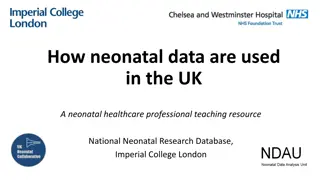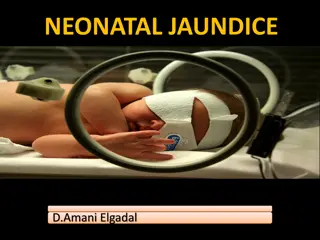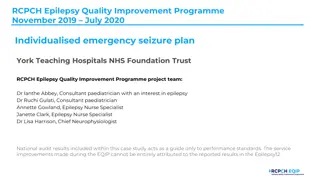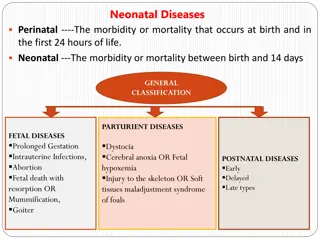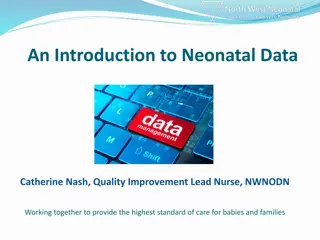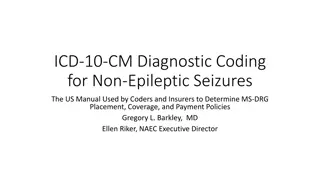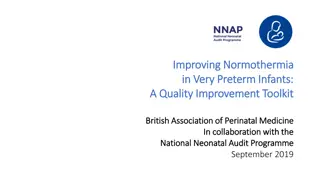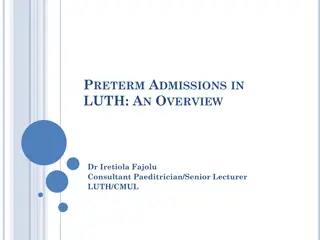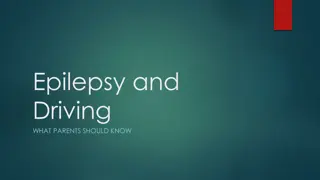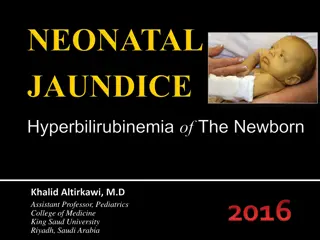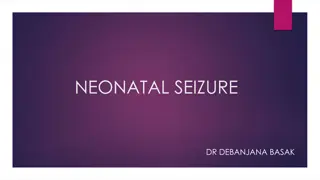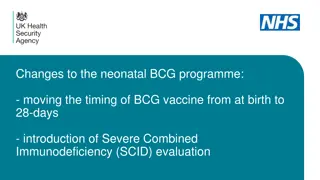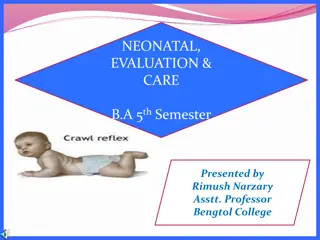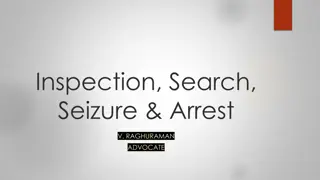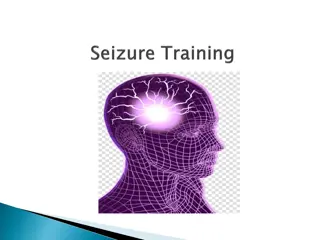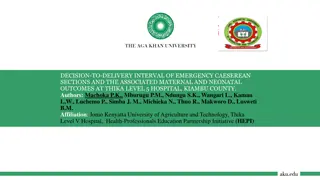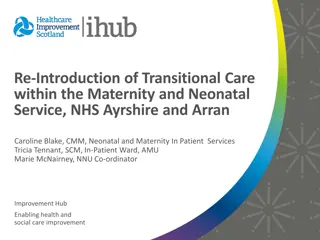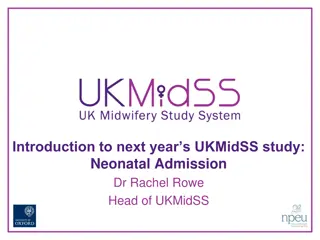
Neonatal Seizures
Explore the definition, causes, diagnosis, and treatment of neonatal seizures in infants younger than four weeks. Learn about common triggers like hypoxic-ischemic encephalopathy, perinatal arterial stroke, and more. Discover key insights to help recognize and manage neonatal seizures effectively.
Download Presentation

Please find below an Image/Link to download the presentation.
The content on the website is provided AS IS for your information and personal use only. It may not be sold, licensed, or shared on other websites without obtaining consent from the author. If you encounter any issues during the download, it is possible that the publisher has removed the file from their server.
You are allowed to download the files provided on this website for personal or commercial use, subject to the condition that they are used lawfully. All files are the property of their respective owners.
The content on the website is provided AS IS for your information and personal use only. It may not be sold, licensed, or shared on other websites without obtaining consent from the author.
E N D
Presentation Transcript
StudyMafia.Org Neonatal Seizure Submitted To: Submitted By: Studymafia.org Studymafia.org
Table Contents Definition Introduction Causes of Neonatal Seizure Diagnosis of Neonatal Seizure Treatment of Neonatal Seizure Conclusion 2
Definition A neonatal seizure is a seizure in a baby younger than age 4-weeks that is identifiable by an electrical recording of the brain 3
Introduction These may be manifested in form of stiffening or jerking of limbs or trunk. Sometimes random eye movements, cycling movements of legs, tonic eyeball movements, and lip-smacking movements may be observed. Alteration in heart rate, blood pressure, respiration, salivation, pupillary dilation, and other associated paroxysmal changes in the autonomic nervous system of infants may be caused due to these seizures. 4
Causes of Neonatal Seizure Hypoxic-Ischemic Encephalopathy: This is the most common cause of seizures in the neonatal period[38] and is an underlying cause for 40-45% of neonatal seizures. The onset of seizure associated with it occurs within first 12 to 24 hrs of life. In HIE, identification of occurrence of seizure is important as it occurs in approximately 25-50 of people with this condition. 6
Causes of Neonatal Seizure Perinatal Arterial Stroke: Arterial stroke can be caused by intra-arterial thrombosis or embolism from the heart or placenta. The onset of seizures associated with focal strokes begin after 24hrs to 48 hrs of birth. Focal clonic seizure is generally associated with it due to involvement of motor cortex in middle cerebral artery region. 7
Causes of Neonatal Seizure Intraventricular hemorrhage: It causes generally causes seizures in term infants except large hemorrhage involving injury to parenchyma. Central Nervous System Infection: CNS Infection are found in 3-10% of neonates who seize, though exact incidence varies between studies 8
Causes of Neonatal Seizure Congenital central nervous system malformations: Lissencephaly, polymicrogyria, and tuberous sclerosis are specific entities known to cause seizures due to defects in brain tissue development. 9
Causes of Neonatal Seizure Inborn errors of metabolism: Inborn errors of metabolism can cause physiologic conditions that result in seizures. These errors are genetic and often are accompanied by other symptoms such as lethargy, poor feeding, and low tone. 10
Diagnosis of Neonatal Seizure Determining the cause : Since many causes of seizures can be rapidly reversed and longterm sequelae prevented, evaluation of underlying cause is of utmost importance. Differential diagnosis: Infants can exhibit stereotyped movements that may be hard to distinguish from seizure activity. 11
Treatment of Neonatal Seizure Treatment greatly depends on the cause of the seizure. For example, infectious causes of seizures (meningitis, meningoencephalitis), are often treated with antimicrobials (antibiotic, antifungal, or antiviral medications). Similarly, electrolyte or glucose abnormalities are treated by repleting or lowering the offending electrolyte or sugar. 12
Treatment of Neonatal Seizure If the cause of the seizures are unlikely to be easily or quickly corrected, once diagnosis of a seizure is made, the mainstay of treatment is pharmacotherapy with anti-epileptic drugs. A 2013 systematic review found that most practitioners use phenobarbital or phenytoin. This study found that phenobarbital has the safest side effect profile and longest history of use in neonates. 13
Treatment of Neonatal Seizure Hence, phenobarbital is used for first-line of treatment. After just one dose of 20 mg/kg of it, seizures are in control, in approximately half of the patients diagnosed with acute symptomatic seizures. A NEOLEV2 study was conducted in the year 2020 to compare the efficiency of levetiracetam and phenobarbital as the first line of therapy. 14
Treatment of Neonatal Seizure 80% of patients who were administered phenobarbital became seizure-free in 24hrs whereas merely 28% patients became seziure free in case of levetiracetam administration. Benzodiazepines are often used as second- line treatment if treatment with phenobarbital does not result in clinical improvement 15
Conclusion Neonatal seizures are a commonly encountered neurologic condition in neonates. They are defined as the occurrence of sudden, paroxysmal, abnormal alteration of electrographic activity at any point from birth to the end of the neonatal period. During this period, the neonatal brain is developmentally immature. 16
Thanks To StudyMafia.org

